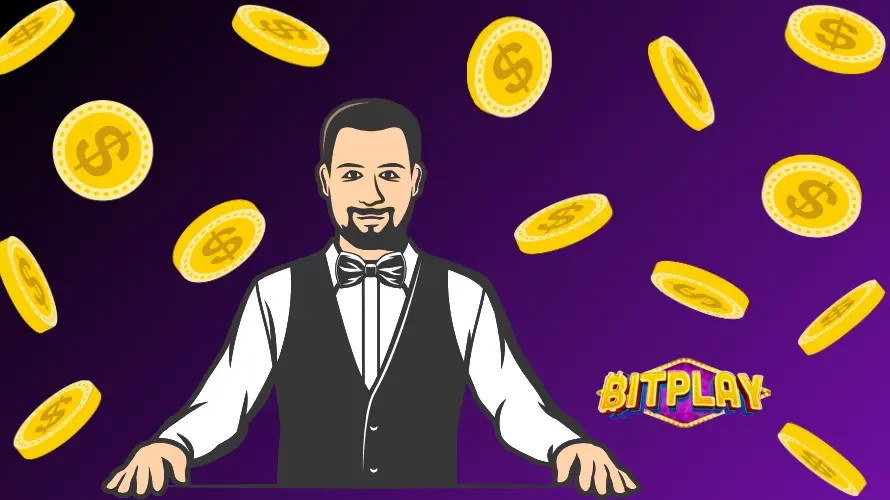Table of Contents
Have you ever wondered why it’s so hard to stop playing at a casino? It’s not just luck or excitement — it’s psychology. Modern casino games are masterfully engineered using psychological principles to keep players engaged, spending, and returning. In this article, we explore the science behind casino game design and how it taps into the human mind Behind Casino Game.
1. Operant Conditioning: The Reward System
In the high-stakes world of online gambling, user experience isn’t just about flashy graphics or fast withdrawals—it’s rooted deeply in psychology. One of the most powerful behavioral science models used in game and casino design is operant conditioning. At platforms like 1BitPlay Casino, understanding this reward system helps explain why players keep coming back, how loyalty programs are structured, and what makes a slot machine or crash game so irresistibly addictive Behind Casino Game.
🎯 What is Operant Conditioning?
Operant Conditioning, first described by psychologist B.F. Skinner, is a learning process through which behaviors are influenced by rewards (reinforcements) or punishments. In simpler terms:
- Do something → Get a reward → More likely to do it again Behind Casino Game.
- Do something → Get a punishment → Less likely to repeat it.
This model forms the core of many game engagement systems, particularly in online gambling, where rewards are strategically timed to influence a player’s decisions and emotions Behind Casino Game.
🎮 How Operant Conditioning Works in Online Gambling
At 1BitPlay, every spin of the roulette wheel, every Aviator flight, and every slot pull is more than entertainment—it’s part of a structured behavioral reinforcement loop. Here’s how operant conditioning manifests on the platform:
1. Positive Reinforcement
This is the most common tactic in online gaming. When a player wins, they receive positive feedback—coins, celebratory animations, bonus sounds, and virtual confetti. This taps into the dopamine reward system in the brain, encouraging players to repeat the behavior Behind Casino Game.
Examples on 1BitPlay:
- Instant rewards for logging in daily
- Bonus multipliers after a win streak
- Surprise free spins after certain bets
2. Variable Ratio Schedule (Slot Machines, Crash Games)
This is the most powerful reinforcement schedule, where rewards are given out randomly after an unpredictable number of actions. It’s used in:
- Crash games like Aviator where the multiplier outcome is random
- Slot machines where symbols line up unpredictably
- Lucky draw loot boxes or NFTs
Why it works: Players know they’ll win eventually—but they never know when. This uncertainty keeps them playing longer, hoping the next big win is just around the corner.
3. Negative Reinforcement & Friction Reduction
Players may be relieved of restrictions or friction (like cool-down timers or locked bonuses) after completing a task or meeting wagering requirements. The relief from these limits acts as a reward Behind Casino Game.
Examples:
- Remove bet limits after account verification
- Unlock high-roller tables after completing a tier
- Skip deposit wait-times after staking a certain amount
4. Punishment or Loss Aversion
If a player loses a bet due to risky behavior or exits a bonus round early, they may experience mild punishment like cooldowns, loss of streaks, or bonus forfeits. This discourages hasty or impulsive decisions and encourages strategic play Behind Casino Game.
🏆 Reward System Design at 1BitPlay: Built on Behavioral Science

At 1BitPlay Casino, operant conditioning isn’t used to manipulate—it’s leveraged to enhance engagement and satisfaction. Here’s how our system is designed:
✅ Tiered Loyalty System
Players move through VIP levels based on consistent play. Each tier unlocks:
- Exclusive bonuses
- Faster withdrawals
- Access to premium games
This is a form of positive reinforcement, encouraging continued play to reach the next reward level Behind Casino Game.
🎁 Daily, Weekly & Monthly Challenges
Players receive:
- Streak bonuses
- Free spins
- Crypto cashback
These rewards are timed and sometimes randomized, mimicking a variable interval reinforcement schedule—perfect for keeping interest high without overwhelming the player Behind Casino Game.
💰 Loss Rebate Programs
Even when players lose, they are offered cashback bonuses or NFT rewards, which serves as negative reinforcement—helping soften the blow and motivating users to stay on the platform.
🧠 Why Do Players Respond to This Reward System?
The reason operant conditioning works so effectively in gaming is because of how the human brain reacts to reward stimuli:
- Dopamine spikes occur with unpredictability, not just with winning.
- Habit loops are created when action → reward → repeat becomes subconscious.
- FOMO (Fear of Missing Out) kicks in with time-limited offers or bonus expiry countdowns.
Combined, these psychological triggers make games at 1BitPlay not just entertaining but deeply engaging.
🔒 Responsible Gaming & Awareness
While operant conditioning can enhance the player experience, 1BitPlay also prioritizes responsible play by:
- Allowing betting limits and time-out options
- Offering behavioral insights and play summaries
- Encouraging users to take breaks through gentle nudges and optional lockouts
Tools
Casino games are built on B.F. Skinner’s theory of operant conditioning, where behaviors are reinforced by rewards. Slot machines, for example, use variable-ratio reinforcement, meaning players get rewarded at random intervals. This unpredictability keeps players engaged longer than predictable reward systems because they always believe the next spin could be the jackpot.
Key Psychological Trigger:
- Intermittent Rewards: Players are more likely to continue playing when rewards are unpredictable but frequent enough to keep hope alive.
2. The Illusion of Control
Many casino games — such as poker, blackjack, and even slot games with “nudge” or “hold” features — give players a false sense of control. This illusion tricks players into thinking their skill or decisions influence outcomes, increasing engagement and confidence.
How It Works:
- Allowing players to press a “Stop” button on slots.
- Offering choices that don’t actually affect the outcome.
3. Sensory Design: Sounds, Colors, and Lights
Every sound and visual element in a casino is meticulously designed. Slot machines use:
- Bright flashing lights to draw attention.
- Upbeat sounds for wins — even small ones — to trick players into thinking they’re winning more often.
- Warm colors like reds and golds to stimulate excitement and urgency.
Psychological Impact:
These stimuli activate the dopamine system, the same brain region involved in pleasure and addiction.
4. Near Misses and False Wins
A “near miss” (e.g., two jackpot symbols and a third just above the line) is more likely to drive continued play than a total loss. Players interpret these as “almost wins,” which stimulate the brain in a similar way to actual wins.
Real-World Effect:
Studies show that near misses increase the likelihood of continued play — a trick heavily used in slot game design.
5. Time Distortion and Environment
Casinos are designed without clocks or windows, disorienting players and removing cues about how long they’ve been playing. The goal is to keep people immersed and unaware of how much time has passed.
Complemented By:
- Free drinks and luxury surroundings to reduce discomfort and promote extended play.
6. Gamification and Progression Systems
Some modern slot machines and online casinos use levels, achievements, and badges, similar to mobile games. This adds a layer of gamification, which encourages goal-setting and persistence.
Example:
- A slot game may unlock a bonus round or a new theme after a certain number of spins, giving players a reason to keep playing.
7. Social Proof and FOMO
Seeing other players win (real or simulated) can trigger social proof, making you believe you’re missing out. Online casinos often show a feed of recent winners to increase the Fear of Missing Out (FOMO).thegamblingworld.com
8. Loss Aversion and the Sunk Cost Fallacy
Players often keep gambling to “win back” money they’ve lost, falling into the sunk cost fallacy. Losses hurt more than wins feel good — a principle known as loss aversion — and casinos exploit this bias heavily.1bitplay.co

Conclusion
Casino games are not just games of chance — they’re expertly crafted psychological experiences designed to maximize playtime and revenue. Understanding the psychology behind casino game design is crucial for recognizing manipulation and making informed decisions when gambling.
🎯 Key Takeaway:
Next time you’re in a casino or playing an online slot, remember: it’s not just luck at play — it’s behavioral science designed to keep you hooked.1BitPlay.io
Conclusion
Casino games are not just games of chance — they’re expertly crafted psychological experiences designed to maximize playtime and revenue. Understanding the psychology behind casino game design is crucial for recognizing manipulation and making informed decisions when gambling.
🎯 Key Takeaway:
Next time you’re in a casino or playing an online slot, remember: it’s not just luck at play — it’s behavioral
Some modern slot machines and online casinos use levels, achievements, and badges, similar to mobile games. This adds a layer of gamification, which encourages goal-setting and persistence.
Example:
- A slot game may unlock a bonus round or a new theme after a certain number of spins, giving players a reason to keep playing.


